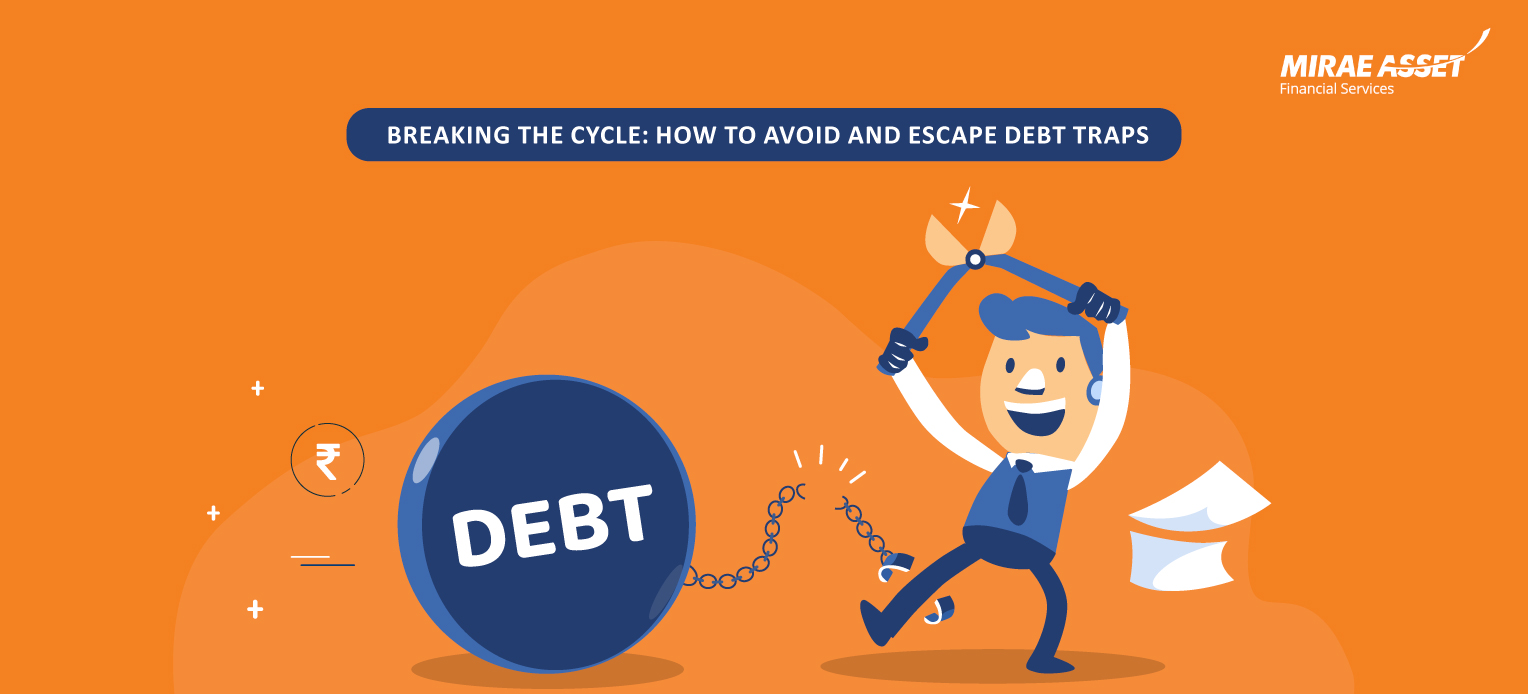Breaking the Cycle: How to Avoid and Escape Debt Traps

In a world where credit is just a click away, borrowing has become an integral part of financial planning. Be it personal loans, credit cards, or other forms of credit, access to funds has never been easier. However, with great accessibility comes the responsibility of disciplined repayment. Failure to manage this responsibility can lead to a situation called a debt trap, where borrowing spirals out of control.
This blog unpacks what a debt trap is, its implications, and practical steps to avoid or escape it. With the right approach, you can steer clear of this financial pitfall and ensure long-term stability.
Understanding Debt Traps
A debt trap occurs when your financial obligations exceed your ability to repay them, often due to high-interest charges and poor financial management. Instead of reducing the principal amount, borrowers find themselves stuck in a cycle of paying off mounting interest, leading to more borrowing.
Common triggers for debt traps include:
- High-interest loans that make it hard to repay the principal.
- Overspending, which leads to reliance on credit for basic expenses.
- Paying only the minimum due on credit cards, allowing interest to compound over time.
- Low financial awareness, which can lead to uninformed borrowing decisions.
- Impulse purchases funded by credit.
- Overestimating repayment capacity, often underestimating the impact of unforeseen expenses or compounding interest.
The Fallout of Debt Traps
Debt traps don’t just strain your finances—they can also affect your overall well-being. Here are some of the repercussions:
- Skyrocketing Interest Costs: High-interest loans deepen the debt hole.
- Credit Score Damage: Missed payments lower your credit score, reducing access to affordable credit in the future.
- Emotional Stress: The pressure of managing debt can lead to anxiety and mental health challenges.
- Limited Emergency Funds: A lack of savings makes dealing with unexpected expenses even harder.
- Relationship Strain: Financial stress often spills over into personal relationships, creating tension.
How to Stay Out of Debt Traps
The best way to deal with a debt trap is to avoid it in the first place. Here’s how:
- Track Your Spending: Budgeting is the cornerstone of financial discipline. Allocate your income wisely and stick to your financial plan.
- Create an Emergency Cushion: Set aside funds for unexpected events. If you have investments like mutual funds or shares, consider options like a Loan Against Securities to access emergency funds without liquidating your assets.
- Prioritize Loan Repayments: Pay off debts before splurging on non-essentials.
- Choose Low-Interest Options: Compare lenders and opt for loans with the lowest interest rates.
- Avoid Impulsive Borrowing: Borrow only when absolutely necessary and within your repayment capacity.
- Borrow from Right Sources: Choose RBI-registered lenders who follow transparent and fair practices. Avoid unregulated entities that may use predatory practices.
Steps to Escape a Debt Trap
Already feeling stuck? Here’s how to regain control of your finances:
- Stop Taking on New Debt: Focus on repaying existing obligations rather than adding to them.
- Consolidate Debt: Combine multiple loans into one with a lower interest rate to simplify payments.
- Seek Expert Guidance: Financial advisors or credit counselors can provide strategies and negotiate better terms with lenders.
- Talk to Your Lenders: Explain your situation and request flexible repayment terms or reduced interest rates.
- Reassess Your Budget: Cut unnecessary expenses and allocate more funds toward clearing debt.
- Reduce Discretionary Spending: Temporarily eliminate non-essential purchases to prioritize debt repayment.
Conclusion:
Debt traps are a result of unchecked borrowing, but they are avoidable and, with effort, escapable. Responsible borrowing, a strong financial plan, and choosing ethical lenders can help you stay financially secure.
Always remember, borrowing is a tool—not a solution. Use it wisely by opting for reputable lenders, understanding the terms, and aligning it with your repayment capacity. Taking proactive steps today can save you from long-term financial stress tomorrow.
Stay informed, borrow responsibly, and safeguard your financial future.
Borrowing Tips/ Things to Keep in Mind While Availing a Loan
To borrow responsibly, keep these tips in mind:
- Shop Around: Compare loan offers from multiple lenders to find the best interest rates and terms.
- Avoid Borrowing for Depreciating Assets: Taking loans for items like gadgets or luxury goods can lead to poor financial outcomes, as these items lose value over time.
- Keep Credit Usage Under Control: Use credit cards responsibly, ensuring you pay off the full amount to avoid high-interest charges.
- Understand the Terms and Conditions: Read the fine print carefully. Know the interest rate, tenure, and any additional fees such as processing charges or prepayment penalties.
- Assess Your Repayment Capacity: Borrow only an amount that you can comfortably repay within your financial limits.
- Check the Lender’s Credibility: Choose an RBI-registered lender to ensure transparency and avoid falling prey to predatory practices.
- Keep a Check on FOIR (Fixed Obligation to Income Ratio): Ensure your total loan obligations do not exceed a safe percentage of your income, typically 40%-50%.
- Avoid Overleveraging: Don’t take multiple loans simultaneously, as this can strain your cash flow.
